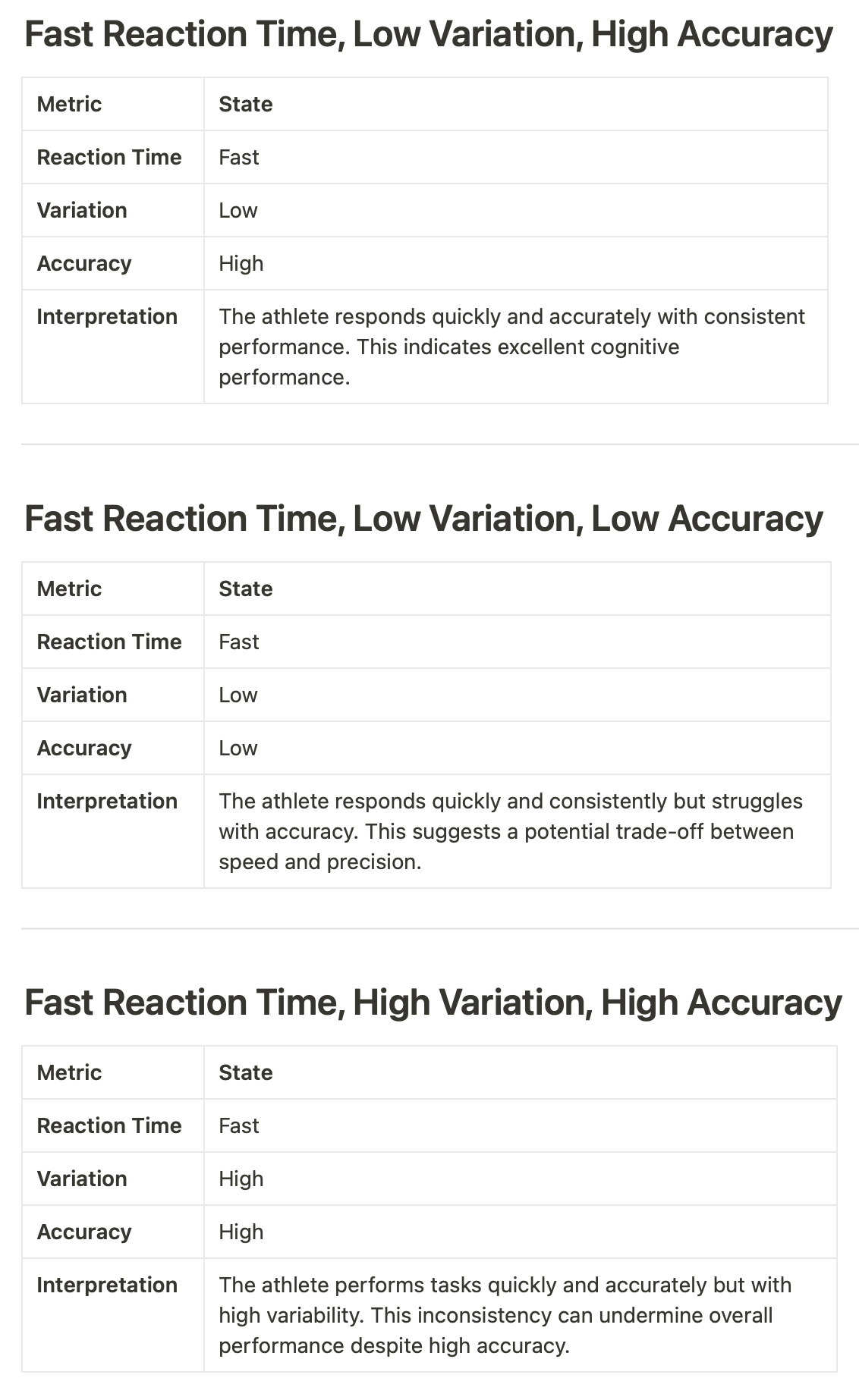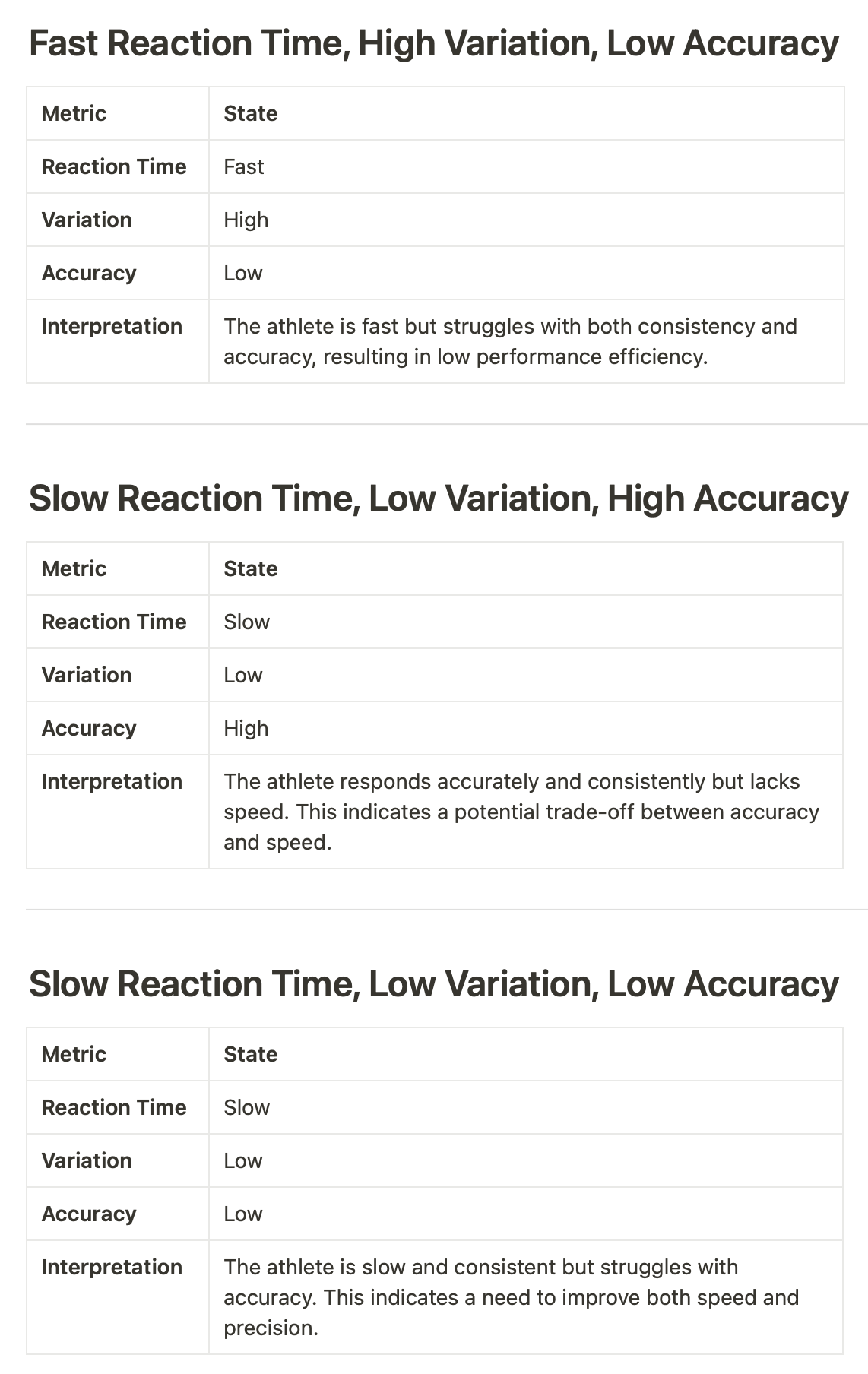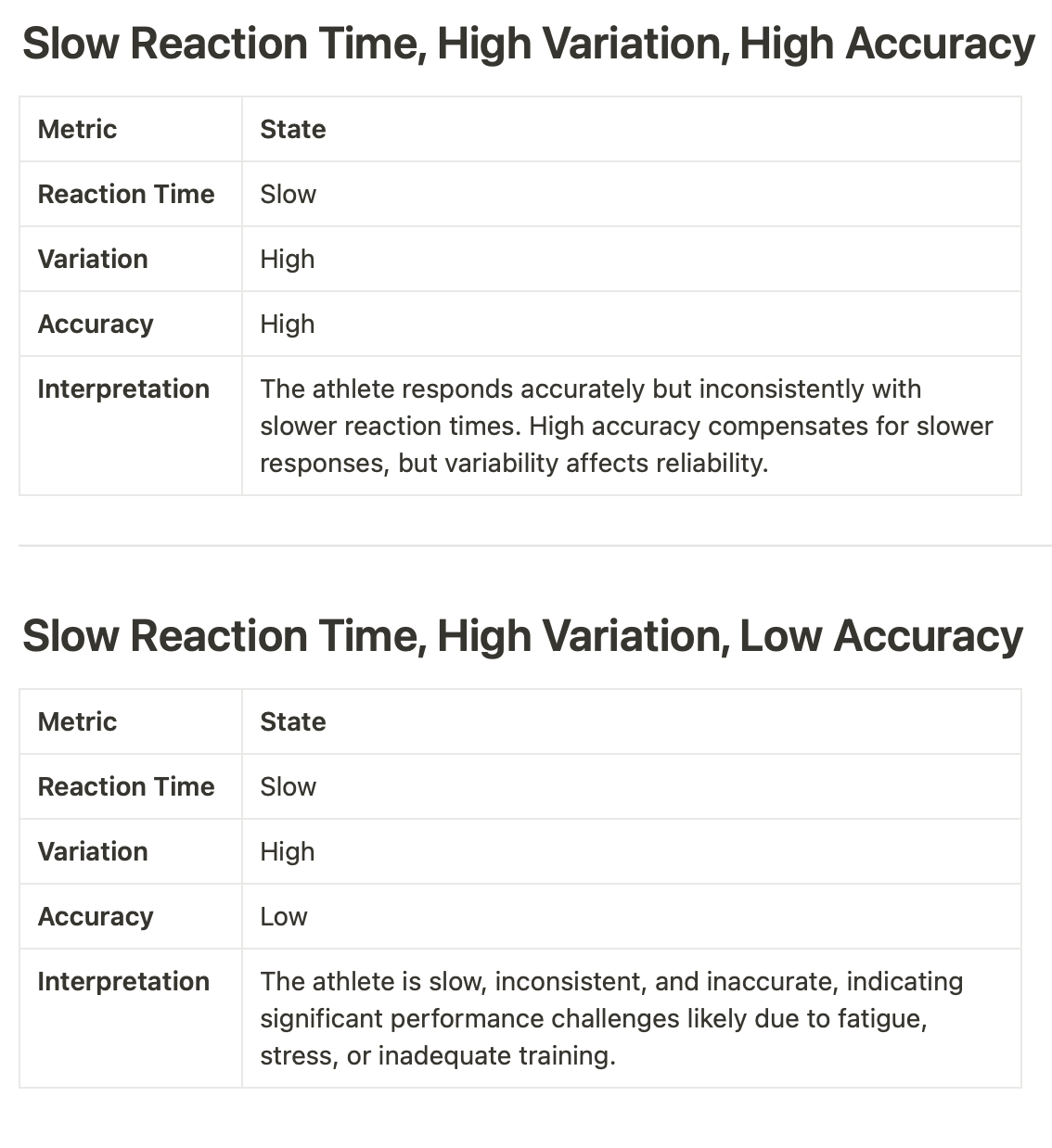Cognitive Performance Patterns
Neglecting variation can lead to misinterpretations, creating the illusion of improvement when, in reality, the data may simply reflect natural fluctuations—or worse, reveal that the athlete has become more erratic in their responses.

The Pitfall of Focusing Only on Reaction Time and Accuracy
When analyzing cognitive performance, it’s crucial not to focus solely on Reaction Time and Accuracy. While these are essential metrics, an equally important—but often overlooked—component is Variation. Neglecting variation can lead to misinterpretations, creating the illusion of improvement when, in reality, the data may simply reflect natural fluctuations—or worse, reveal that the athlete has become more erratic in their responses. Without tracking Variation, you cannot fully understand or accurately assess the athlete’s performance.
Let’s break this down with a practical example.
Imagine you’re evaluating an athlete with an Initial Reaction Time of 486 ms. That’s a respectable figure, and when paired with 98% accuracy, you might conclude that the athlete is performing exceptionally well. Now, after a training program, their reaction time improves from 486 ms to 350 ms. At first glance, this looks like a remarkable improvement, leading you to believe that the training has been successful.
However, this conclusion could be premature—especially if Variation is not taken into account.
Variation measures the degree of fluctuation in an athlete’s responses around the mean (average), providing insight into whether their performance is consistent or erratic. Low variation suggests stability and reliability, whereas high variation points to inconsistency. Without considering variation, you might mistakenly believe the athlete has improved, when in fact their performance has become less consistent.
Let’s revisit the example with Variation factored in:
- Initial Reaction Time: 486 ms
- Initial Variation: 36%
Suddenly, the athlete’s performance doesn’t seem quite as impressive. A 36% variation indicates inconsistency in their responses. Upon re-testing, the athlete’s reaction time has improved to 350 ms, but their variation has increased to 47%.
This rise in variation suggests that, although the athlete’s reaction time is faster, their performance is now less consistent and less reliable. The improvement in speed is deceptive because it conceals the fact that the athlete’s overall consistency has deteriorated.
Understanding these nuances is essential for accurate performance analysis. The tables below outline the most common cognitive performance patterns, defined by unique combinations of Reaction Time, Variation, and Accuracy. By familiarizing yourself with these patterns, you can enhance your ability to analyze data more effectively and make informed adjustments to training programs.



